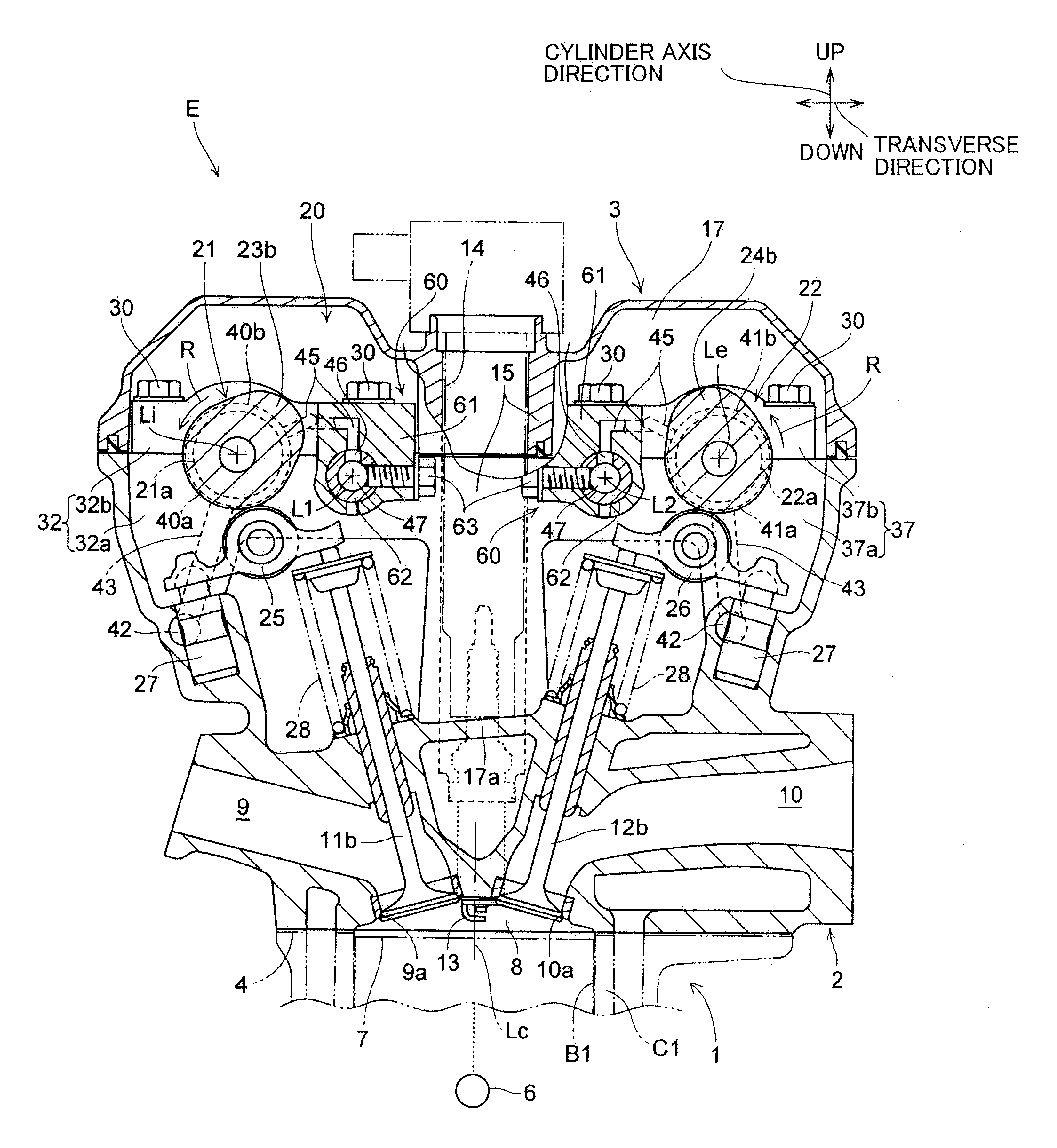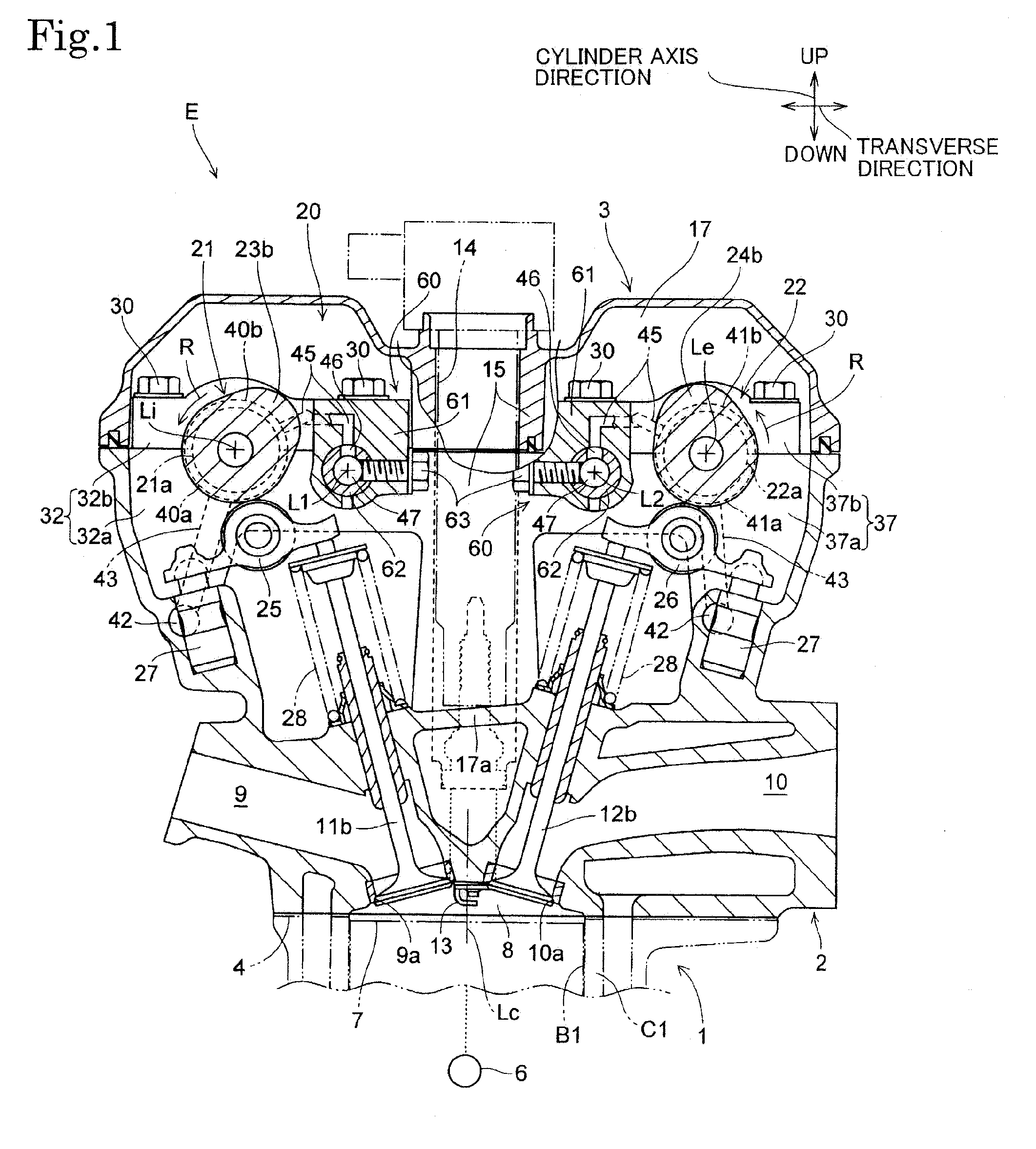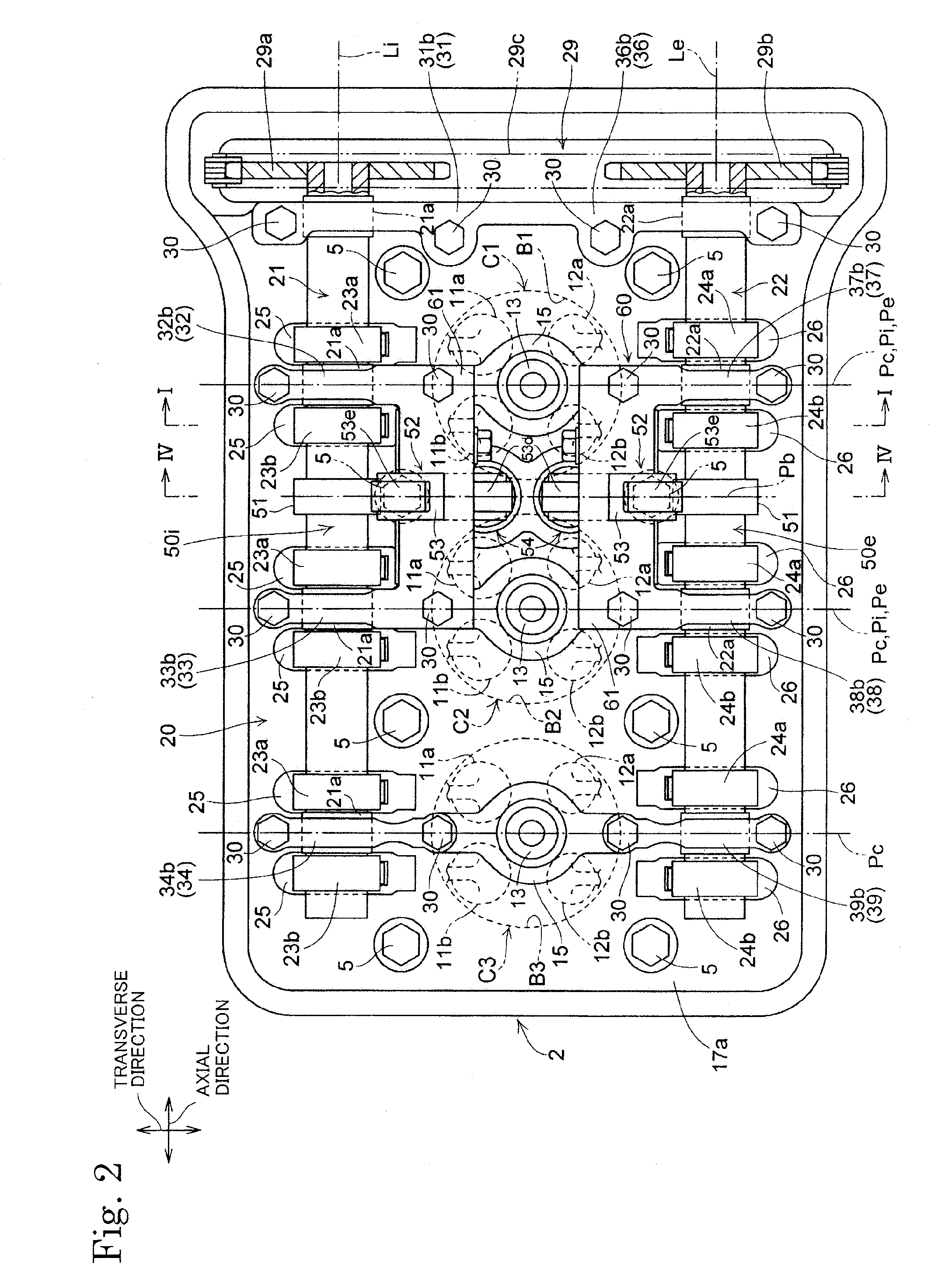Valve train for internal combustion engine
- Summary
- Abstract
- Description
- Claims
- Application Information
AI Technical Summary
Benefits of technology
Problems solved by technology
Method used
Image
Examples
first embodiment
[0048]FIGS. 1 to 6 are views of assistance in explaining a valve train 20 in the present invention.
[0049]Referring to FIGS. 1 and 2, an internal combustion engine E provided with the valve train 20 of the present invention is a multiple-cylinder four-cycle internal combustion engine. The internal combustion engine E has an engine body including a cylinder block 1 provided with, for example, three cylinders C1 to C3 arranged in a line along an axial direction parallel to the axes of camshafts 21 and 22, a cylinder head 2 joined to the upper end of the cylinder block 1 with a head gasket 4 held between the cylinder block 1 and the cylinder head 2, and a head cover 3 joined to the upper end of the cylinder head 2.
[0050]In the following description, a ‘vertical direction’ is a cylinder-axis direction parallel to the axes Lc of the cylinders C1 to C3, an ‘axial direction’ is a direction parallel to the respective center axes Li and Le of the camshafts 21 and 22, and a ‘transverse directi...
second embodiment
[0119]The phase control mechanism 91, namely, a first phase control mechanism turns the outer camshaft 121. The phase control mechanism 92, namely, a second phase control mechanism, turns the inner camshaft 221. In the second embodiment, the phase control mechanisms 91 and 92 having the same basic construction are generally known hydraulic phase control mechanisms.
[0120]The first phase control mechanism 91 combined with the outer camshaft 121 has a body 91a integrally provided with a cam sprocket 29a, and a rotating member 91b received in the body 91a so as to be turnable relative to the body 91a and connected to the outer camshaft 121 so as to be rotatable together with the outer camshaft 121. The second phase control mechanism 92 combined with the inner camshaft 221 has a body 92a that rotates together with the outer camshaft 121, and a rotating member 92b combined with the body 92a so as to be turnable relative to the body 92a.
[0121]An ignition advance chamber and an ignition de...
third embodiment
[0165]In the third embodiment, most part of the pressing member 54a, the compression coil spring 54c, the roller 53d and the holding protrusion 70 with respect to the transverse direction may be disposed opposite to the counteraction cam 51 with respect to the center plane Pn of the internal combustion engine E. When the pressing member 54a, the compression coil spring 54c, the roller 53d and the holding protrusion 70 are thus arranged, the distance between the support shaft 62 and the roller 53d with respect to the transverse direction is increased and the lever ratio of the lever 53 can be diminished still further; that is, the same counter torque can be produced by a force lower than the force Fa or an increased counter torque can be produced by the same force Fa.
[0166]The camshafts may be supported in rolling bearings or sliding bearings on the camshaft supports.
[0167]The counteraction cam and the camshaft may be separately made and the counteraction cam may be mounted on the ca...
PUM
| Property | Measurement | Unit |
|---|---|---|
| Force | aaaaa | aaaaa |
| Torque | aaaaa | aaaaa |
Abstract
Description
Claims
Application Information
 Login to View More
Login to View More - R&D
- Intellectual Property
- Life Sciences
- Materials
- Tech Scout
- Unparalleled Data Quality
- Higher Quality Content
- 60% Fewer Hallucinations
Browse by: Latest US Patents, China's latest patents, Technical Efficacy Thesaurus, Application Domain, Technology Topic, Popular Technical Reports.
© 2025 PatSnap. All rights reserved.Legal|Privacy policy|Modern Slavery Act Transparency Statement|Sitemap|About US| Contact US: help@patsnap.com



